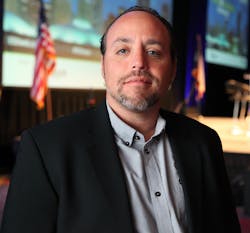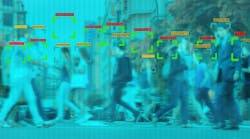Editor's Note: Facial Recognition Face-Off
Most of us have been in this industry long enough to remember back to 2001 and Super Bowl XXXV – when federal officials decided to give new-fangled face recognition technology a try by scanning thousands of faces in the stands to find wanted criminals. In the end, police identified 19 people with outstanding arrest warrants…and the ACLU went bonkers.
What’s old is new again…and facial recognition has once again caught the eyes of civil libertarians – the difference being that this time, the technology has teeth. Thanks to deep learning algorithms and Artificial Intelligence, facial recognition has become one of the more viable video surveillance analytic technologies.
As more urban and city security managers deploy the technology, the fear that it will be misused has become prevalent. In July, those fears manifested in San Francisco, which became the first major city to ban the use of facial recognition by the city’s police and other agencies. Other cities have followed suit; and federally, in July the U.S. House of Representatives passed a bipartisan amendment to the 2020 Intelligence Authorization Act (H.R. 3494) requiring reporting by the Director of National Intelligence on government use of face recognition technology, its accuracy, policies and procedures to safeguard human rights.
“Decisions about whether we want to hand the government the power to identify who attends protests, political rallies, church or AA meetings should not be made in the secret backroom of a police station, lobbied by executives that market this technology,” ACLU attorney Matt Cagle said in a statement following Oakland, Calif.’s recent ban.
Most of us in this industry would agree that this is not the case; however, sensational quotes about the technology have been pervasive across the country, and it is now incumbent upon the security industry to do its part to dispel these unfounded claims.
I sat down with Jake Parker, Senior Director of Government Relations for the Security Industry Association (SIA), to figure out how the industry and security integrators can contribute to this effort. He told me about a very helpful whitepaper that SIA recently produced, entitled Face Facts: Dispelling Common Myths Associated with Facial Recognition Technology – available at www.securityindustry.org/?s=face+facts – that both dispels some of the hyperbole while giving integrators real-world examples of how facial recognition is vital to security, such as finding missing children and border security, to name a couple.
“We certainly are encouraging policymakers to take a second look when they are being asked to consider legislation at whatever level that would prohibit the use of facial recognition technology,” Parker says. “The facts don’t justify that kind of action. We are working with our members to help educate Congress, state legislators and the public about how the technology works. We need to do a better job both on educating about how the technology works and also how it applies to the real world here in the U.S.”
Parker adds that integrators taking on a more active role as trusted technology advisors can go a long way toward acceptance of the technology – after all, understanding the huge difference between scanning faces at the Super Bowl and scanning faces at a building’s entry is key to acceptance.
“We should be in a situation where integrators are advising their customers on best practices for using these technologies, and this should mitigate some of the concerns,” Parker says. “The security industry really needs to take up this issue, because there are other technologies that these same activists are trying to suppress, including other video surveillance technologies.”
Read the full version of our coverage of facial recognition bans, including the entire Q&A with Jake Parker, at www.securityinfowatch.com/21095013.
Paul Rothman is Editor-in-Chief of Security Business magazine. Access the current issue, archives and subscribe at www.securitybusinessmag.com.





